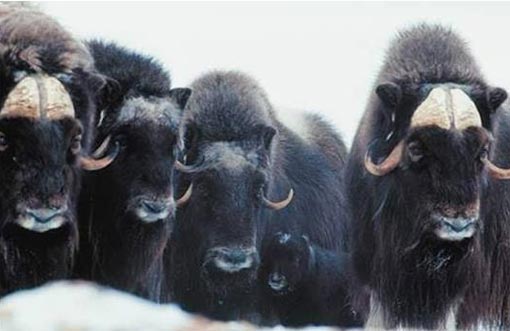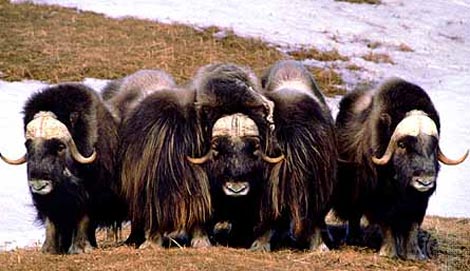Musk Ox – Musky, Cold-Weather Bovine

In prehistoric times the musk ox lived throughout northern Europe, Siberia and North America. It was largely wiped out though and now survives only in parts of northern Canada and Greenland. It has been re-introduced to Norway, Russia and Alaska and numbers are growing there.

The musk ox is superbly equipped for life in harsh arctic conditions with its very dense undercoat that doesn’t let the water or cold penetrate. Their outer coat of long, coarse hair hangs almost to the ground. The hoofs are extra wide so that they have a better surface on the snow and don’t sink. Both males and females have big heavy horns. These they use when any predators such as wolves show up on the scene.

Defensive formation – We have horns, stay away wolves!
The males have glands on the face that emit a “musky” odor. That’s where they get their names and that’s how the males attract the females. Otherwise they might be called “long-hair bovine” or maybe “hippie snow ox.”
They generally live in herds with around 100 other animals and eat mostly grass.
